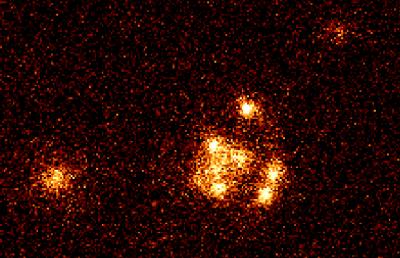
The Cosmic Lens All-Sky Survey (CLASS), is an international (USA, UK and Netherlands) collaborative project to map more than 10,000 radio sources in order to create the largest and best studied statistical sample of radio-loud gravitationally lensed systems. With this survey, combined with detailed studies of the lenses found therein, powerful constraints can be placed on the cosmography (ie. expansion rate, mean density, and cosmological constant) of the Universe. CLASS is aimed at identifying lenses where multiple images are formed from compact flat-spectrum radio sources. The lens configurations should be easily identifiable in the radio maps. Thus, CLASS is most efficient at finding galaxy-mass lenses (which will dominate the counts for surveys not targeted at clusters) with separations of around a few arcseconds.
One of the most important uses of galaxy-mass lenses is in the determination of cosmological parameters. In particular, time delays measured between the components in multiple image systems can directly determine the angular-diameter distances to the lens and lensed objects, and therefore the Hubble constant H_0. Because the lensing equations depend on a ratio of distances, they are not as sensitive to the deceleration parameter q_0 and cosmological constant, although if accurate delays were found to a number of lenses at a range of redshifts, some measurement of these quantities could be made. Of course, the success of the method depends upon the presence of measurable variability in the lensed source, and the ability to construct a well-constrained mass model for the lens, and thus only a few lenses found in CLASS will be ``golden lenses'' suitable as cosmological standards. The CLASS group is monitoring the quadruple lens 1608+656 found in the first year of the survey. In addition to specific lenses, the survey statistics as a whole can provide constraints on cosmological models.
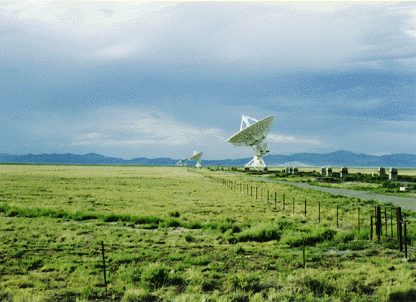
The Very Large Array (VLA) is being used as the primary instrument for the CLASS survey. In its largest ``A'' configuration, the VLA provides high-quality images with angular resolution of 0.2 arc-seconds at a typical observing frequency of 8.5 GHz. In the first phase of CLASS, observed with the VLA in February - May 1994, 3258 radio sources were mapped. From among these, We have identified around 100 sources with extended structure or multiple components for follow-up; based upon lensing statistics from previous surveys, we expect to find around 6 lenses among these. So far, there have been four confirmed lenses identified from the CLASS-1 survey, including 1600+434, a 1.4" double (Jackson etal. 1995), and 1608+656, a 2.1 quadruple image lens (Myers etal. 1995). The observations for the second phase, CLASS-2, were carried out in August and September 1995. In these sessions, an additional 4465 targets were imaged, bringing the CLASS total to 7723 sources. Preliminary examination of the CLASS-2 images and prompt follow-up found one new quadruple image lens system, and a large number of multiple-component candidates to study.
There have been previous VLA-based lens surveys: the MIT-Green Bank (MG) survey, and the Jodrell Bank VLA astrometric source survey (JVAS). In the ~5000 target sources observed in these surveys, a number of multiply imaged lens systems have been found (0218+357, 0414+0534, 1422+231, 1938+666).
The success of the CLASS survey, and the unprecedented observing and analysis speed, was made possible through automation of the observation scheduling and mapping analysis pipeline. Specialized ``auto-mapping'' software, called DIFMAP, with scripting capability, was developed to carry out these tasks (Shepherd etal. 1994). This has allowed us to observe an average of one target source per minute with the VLA, and then later to map the calibrated data at the rate of better than one field per two minutes of IBM RS6000 or Sparc-20 workstation time.
The distribution of separations and redshifts of lenses found in surveys such as CLASS provide powerful constraints upon the cosmology, particularly the cosmological constant. A well-defined sample selection is necessary to understand the statistics of the lensing, which is in turn necessary to constrain the cosmology (e.g. Turner, Ostriker & Gott 1993, Kochanek etal. 1993). Multiply-imaged lenses with compact radio components are excellent targets for cosmological studies, for the reasons outlined above. However, interpretation of the statistical results from any observational survey in the context of theoretical models requires the control of selection effects in the data sample. In the case of CLASS, this means studying the effects of the lensing on the parent sample of the survey, the resulting image geometries, the ability of the auto-mapping to identify the lensed images, and possible loss of lenses from the survey.
In addition to the lens candidates and lensing-related applications, the CLASS survey provides a solid body of radio information for all the objects. Astrometric (50 mas) positions for the sample are determined, which refines the MERLIN/VLBA phase-reference source network to a spacing of < 1 degree.
Note: out of date - needs updating
| Lens | Sep & Morph | z lens | z src | Lens ID1 | Survey |
|---|---|---|---|---|---|
| B0218+357 | 0.33" double + ring | 0.68 | 0.96 | S | JVAS |
| MG0414+054 | 2.09" quad | 0.96 | 2,64 | E | JVAS & MG |
| B1030+074 | 1.56" double | 0.60 | 1.54 | S | JVAS |
| B1422+231 | 1.28" quad | 0.34 | 3.62 | JVAS | |
| B1938+666 | 0.93" quad + ring | 0.878 | JVAS | ||
| CLASS B0128+437 | 0.542" quad | CLASS-1 | |||
| CLASS B0739+366 | 0.54" double | CLASS-2 | |||
| CLASS B0712+472 | 1.27" quad | 0.41 | 1.34 | S | CLASS-1 |
| CLASS B0827+525 | 2.82" double | 2.064 | not a lens? | CLASS-2 | |
| CLASS B1127+385 | 0.70" double | S + S? | CLASS-2 | ||
| CLASS B1152+199 | 1.56" double | 0.44 | 1.02 | CLASS-3 | |
| CLASS B1359+154 | 1.65" quad | 3.24 | group | CLASS-3 | |
| CLASS B1555+375 | 0.43" quad | CLASS-2 | |||
| CLASS B1600+434 | 1.39" double | 0.42 | 1.59 | S | CLASS-1 |
| CLASS B1608+656 | 2.08" quad | 0.64 | 1.39 | S + S? | CLASS-1 |
| CLASS B1933+503 | 1.17" quad + quad + double | 0.76 | CLASS-1 | ||
| CLASS B2045+265 | 1.86" quad | 0.87 | 1.28 | CLASS-2 | |
| CLASS B2319+051 | 1.36" double | 0.62, 0.59 | E + E | CLASS-2 |
Notes: 1 Lens IDs E=clearly elliptical or early type galaxy, S = spiral, lenticular, or elongated early type galaxy, group = small group (more than two contributing members).
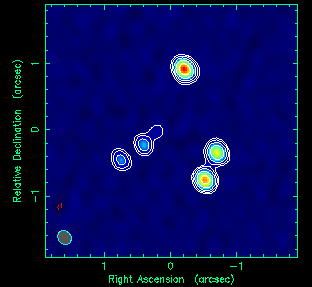
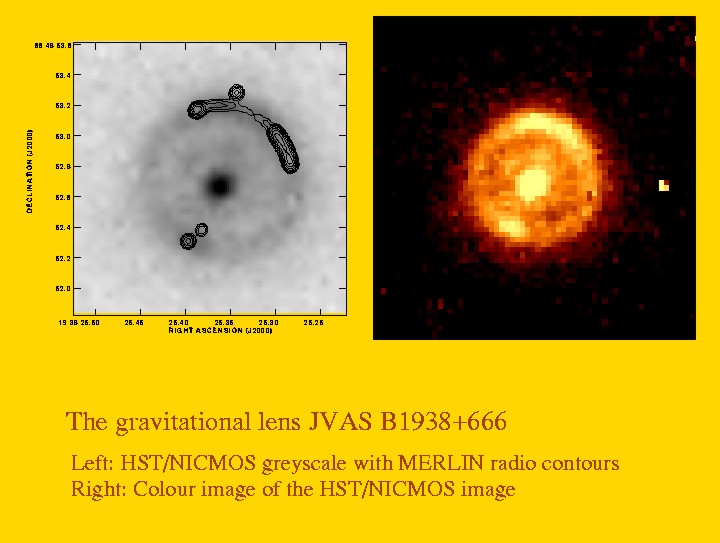
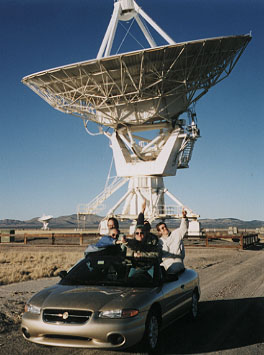 |
 |
Steven T. Myers